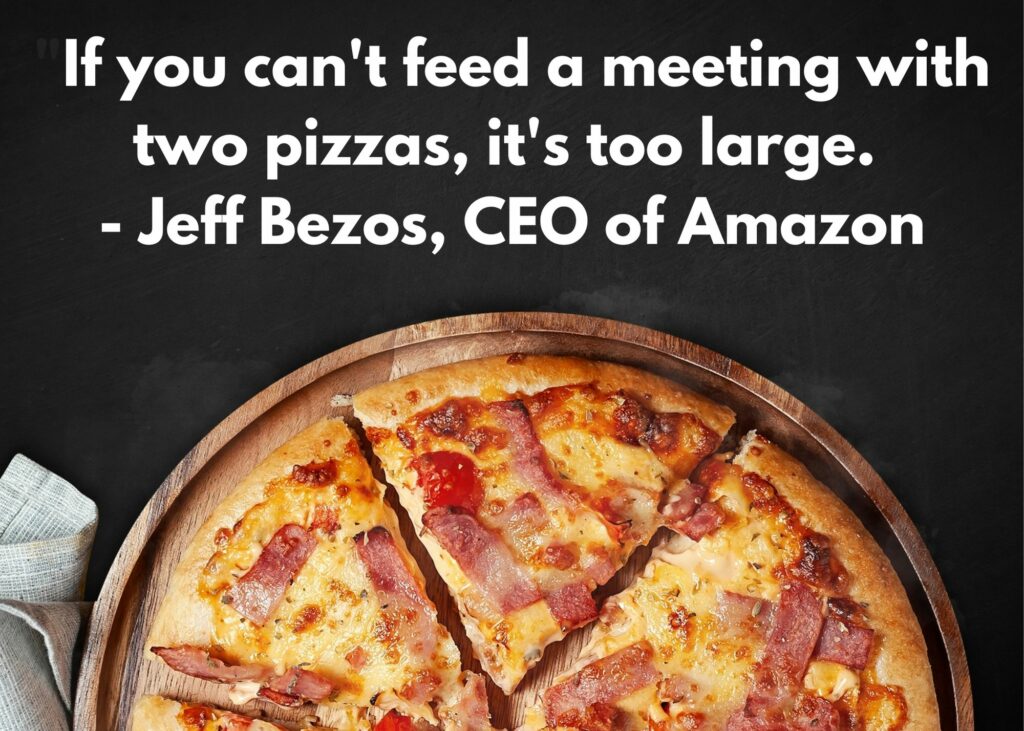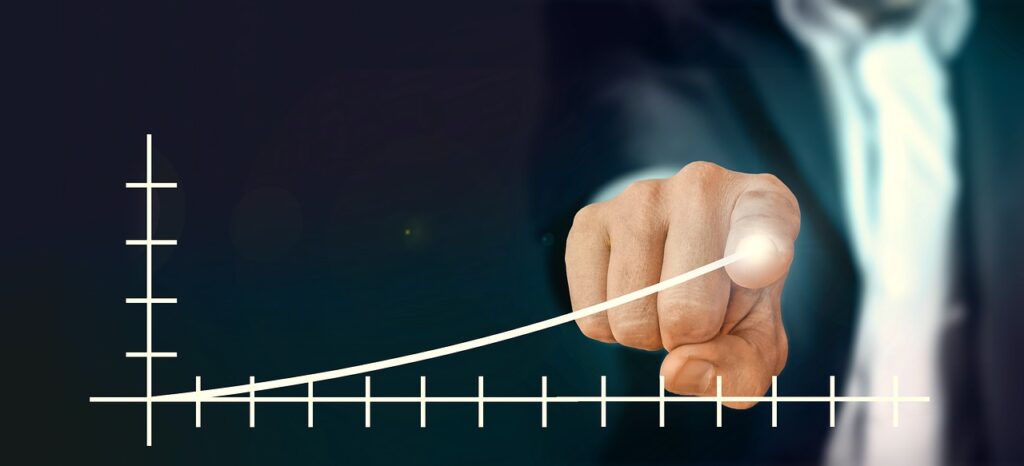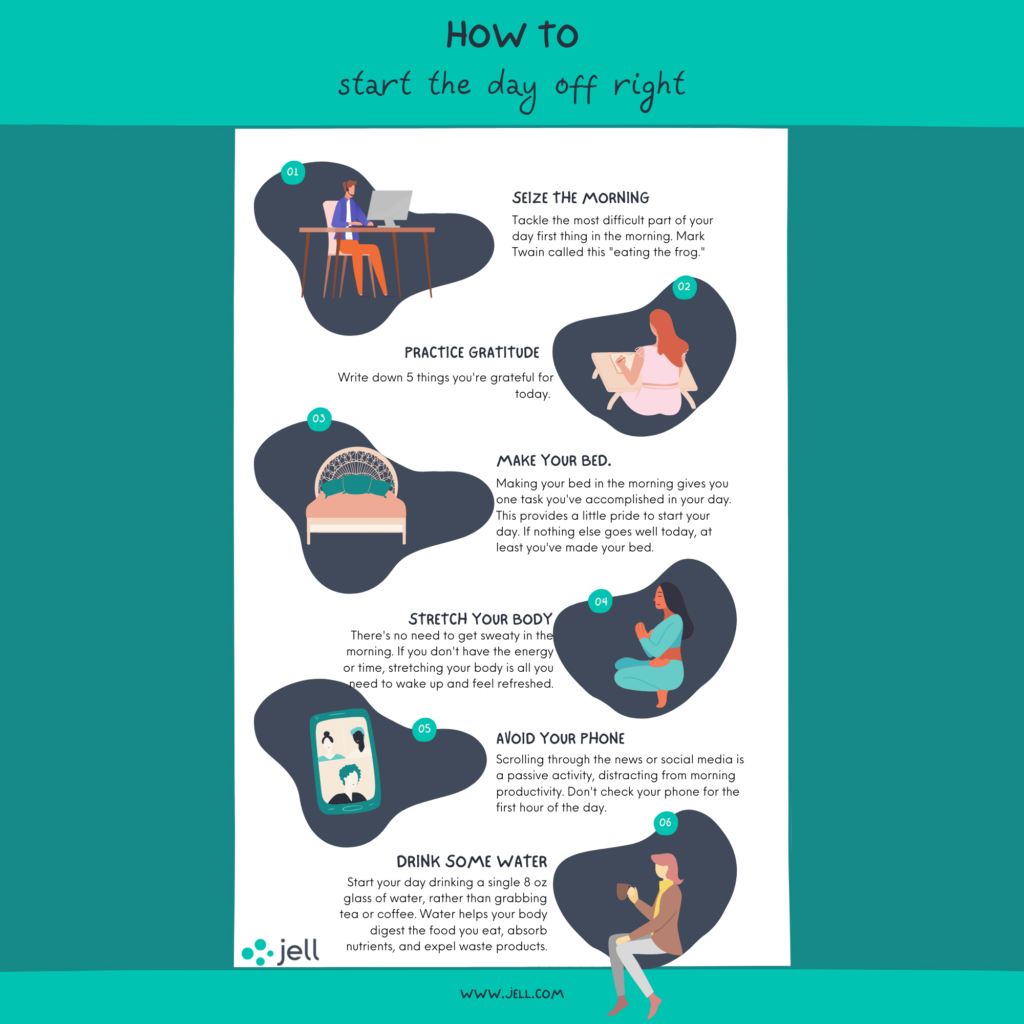 The saying “quality over quantity” holds in many facets of life—so why not use this mindset to plan productive meetings?If you read our post on the psychology of routine meetings, you know the difference between meetings that make teams more efficient and ones that aren’t truly essential. In this post, we’ll look at three key areas where social science can help us reinvent meetings to focus on quality, enabling teams to get the most out of productive meetings that are really, truly needed:
The saying “quality over quantity” holds in many facets of life—so why not use this mindset to plan productive meetings?If you read our post on the psychology of routine meetings, you know the difference between meetings that make teams more efficient and ones that aren’t truly essential. In this post, we’ll look at three key areas where social science can help us reinvent meetings to focus on quality, enabling teams to get the most out of productive meetings that are really, truly needed:- Attendees: When two heads are worse than one
- Duration: Why less is more
- Time of day: How later can be better
Jell Reduces Meeting Time
Daily Standupd, Check-ins, & OKRs.
14-day free trial. No credit card required.
Related Articles
Free OKR Template – How to Set Objectives and Key Results
Concrete Tips for Getting Started with OKRs
How to Use Stretch Goals with OKRs
Before we dive in, some background info on the love-hate relationship when it comes to meetings:Unfortunately, it happens to the best of us.As the team leads talks, someone starts snoring. Or takes a call. Or starts scrolling through all sorts of apps and tasks that have nothing to do with the actual meeting taking place.If it hasn’t happened yet, it will. Yet the recurring meeting has become so ingrained in a 20th-century work culture that this anachronistic practice continues to persist well beyond the bygone era of its usefulness. We continue to worry that we can’t motivate teams if we don’t see the members face-to-face, even as a new wave of surveys and studies discredits that idea. Not all meetings are extraneous, of course. Some serve fundamental purposes. A productive meeting has the power to focus teams, prevent email excess, and even save money.However, these are the meetings born out of necessity—to achieve a specific goal, for instance, or to determine and delegate critical deliverables—instead of routine.So…what is it that separates the productive meetings from the time-suckers?It’s certainly not a new question to pose. And there’s no shortage of listicles on the subject, with headlines like:11 Simple Hacks for More Productive Meetings5 Simple Ways to Recover the Lost Art of Productive Meetings8 Clever Tricks to Keep People Awake in the Conference RoomOK, so I made up that last one. But still. While these articles provide good short-term suggestions, relying on them alone is a lot like using Band-Aids to fix a bullet hole. Those little gauze pads might slow the bleeding when applied with pressure and used all at once, but not for very long. And until you repair the actual damage for long-term healing, they may even do more harm than good.The ability to implement real change comes from looking beneath the surface to understand why the schedule is vitally important. Or how less time can make meetings more effective.Why is “keeping people on-topic” considered a hack when it takes many managers months or years to master this one skill? And how is it that the beloved Steve Jobs is revered for kindly kicking out extraneous invitees while so many leadership and etiquette experts advise against actions that will make people feel left out?OK, let’s dive in.
Not all meetings are extraneous, of course. Some serve fundamental purposes. A productive meeting has the power to focus teams, prevent email excess, and even save money.However, these are the meetings born out of necessity—to achieve a specific goal, for instance, or to determine and delegate critical deliverables—instead of routine.So…what is it that separates the productive meetings from the time-suckers?It’s certainly not a new question to pose. And there’s no shortage of listicles on the subject, with headlines like:11 Simple Hacks for More Productive Meetings5 Simple Ways to Recover the Lost Art of Productive Meetings8 Clever Tricks to Keep People Awake in the Conference RoomOK, so I made up that last one. But still. While these articles provide good short-term suggestions, relying on them alone is a lot like using Band-Aids to fix a bullet hole. Those little gauze pads might slow the bleeding when applied with pressure and used all at once, but not for very long. And until you repair the actual damage for long-term healing, they may even do more harm than good.The ability to implement real change comes from looking beneath the surface to understand why the schedule is vitally important. Or how less time can make meetings more effective.Why is “keeping people on-topic” considered a hack when it takes many managers months or years to master this one skill? And how is it that the beloved Steve Jobs is revered for kindly kicking out extraneous invitees while so many leadership and etiquette experts advise against actions that will make people feel left out?OK, let’s dive in.1. Attendees: When two heads are worse than one
It’s one of the most repeated mantras of meeting sages: invite fewer people, make a meeting more productive. But why?Parkinson’s law of triviality offers one explanation. This concept, proffered by British naval historian C. Northcote Parkinson in 1957, states that people in groups tend to give disproportionate weight to pointless discussions.It’s based on a committee that deliberated on proposed designs for a nuclear power plant. Instead, the vitally important schedule spent the majority of the time discussing trivial but easy-to-grasp issues like what materials to use for the staff bikeshed. An atomic reactor is too complicated for the average person to discuss intelligently; a shed is not. So unless the committee consists of a small group of nuclear scientists, the conversation is destined to veer off into the Land of Inconsequential Chit Chat.It’s called “bikeshedding,” and it happens all the time. When no one wants to admit they don’t understand why they’re in the room, they’ll simply discuss which restaurant should cater to next week’s staff lunch or debate what fonts to use in email signatures.What happens, though, when a significant group decision must be made? In this case, wouldn’t it be wise to expand the meeting to incorporate more viewpoints from more attendees?Not according to research. Studies show that too much data from too many people can be disabling. Moreover, the widespread adoption of group brainstorming sessions and committee-based decisions directly contradicts scientific evidence that two heads are often worse than one.One of the first modern psychology experiments to test the effects of group dynamics took place at the University of Minnesota. Psychology professor Marvin Dunnette divided 48 research scientists and advertisers into four groups and gave each an issue to problem-solve collectively. He then had them brainstorm a second, similar issue independently. The results? Ninety-six percent of participants produced more ideas when they worked alone, often higher quality.In another series of experiments, psychologist Solomon Asch found that group dynamics lead participants to conform to others’ suggestions even when they’re wrong. Ninety-five participants answered every question in Asch’s simple vision test correctly—until he planted actors to give incorrect answers confidently. Then, nearly 75% of people went along with at least one of the group’s wrong answers. In an excellent recap of this now-famous study, psychology expert Kendra Cherry noted that conformity tends to increase with group size. She also says that:- When people view the others in the group as more powerful, influential, or knowledgeable than themselves, they are more likely to go along with the group.
- Conformity also increases when the task becomes more difficult. In the face of uncertainty, people turn to others for information about responding.
- Conformity tends to decrease when people can others for information about responding, respond privately, or have support from at least one other individual in a group.

2. Duration: Why less is more
Good ol’ C.N. Parkinson had another theory—a famous one called Parkinson’s Law. Work expands to fill the time available for its completion, it states. Later iterations (or correlations) of this theory have essentially flipped it to say that work contracts to fit the time we give it. Or, considered from another angle:Meetings expand or contract to fit the time scheduled.Yet how many times have you said or heard the following?“We should only need 30 minutes, but I’ve scheduled an hour just in case.” Lifehack contributor Joel Falconer cleverly put it this way:“Most employees who defy the unwritten rule of ‘work harder, not smarter’ know that, despite the greater return on investment for the company, it’s not always appreciated. That’s related to the idea that the longer something takes to complete, the better quality it must inherently be.”Instead of filling in that extra time with productivity, he says, we’re just adding stress and tension. Setting the appropriate duration lets us gain back more time so “the task will reduce in complexity to its natural state.” He suggests identifying the “cockroaches of the productivity world” and quashing the extraneous time they unnecessarily eat up.Falconer referred to tasks, but the same approach can be applied to meetings. For example, if you don’t need more than 30 minutes, the calendar invite should be 30 minutes.Productivity isn’t the only reason shorter meetings are better. Social scientists are discovering evidence that the human brain is wired to pay attention and absorb information for 10 to 18 minutes before it begins to tune out.Social cognition researcher Dr. Paul King made an important discovery that helps explain this phenomenon. In his study of college students who listened to the information, knowing they’d be asked questions about it afterward, King found that public speaking produces as much anxiety for listeners as it does for presenters. His research shows that the more information an audience is asked to consume, the more intense the mental load becomes. Furthermore, this “cognitive backlog” becomes so heavy that listeners drop it all and fail to remember anything at all.In other words: People will mentally check out even a well-planned meeting if it goes on too long.Professional trainer Carmine Gallo says this science is the secret behind the success of TED talks. He says:“A lot can happen in 18 minutes…In a 15-minute TED talk, Facebook COO Sheryl Sandberg inspired millions of women to ‘lean in.’ Steve Jobs gave one of the most popular commencement addresses of our time at Stanford University, and he did it in 15 minutes…If these leaders can inspire their audiences in 18 minutes or less, it’s plenty of time for you to pitch your idea!”Reality Check: Do Your Meetings Take Too Long?Keep the length of productive meetings in check by adopting this three-part strategy from Inc. 500 entrepreneur Kevin Daum:
Lifehack contributor Joel Falconer cleverly put it this way:“Most employees who defy the unwritten rule of ‘work harder, not smarter’ know that, despite the greater return on investment for the company, it’s not always appreciated. That’s related to the idea that the longer something takes to complete, the better quality it must inherently be.”Instead of filling in that extra time with productivity, he says, we’re just adding stress and tension. Setting the appropriate duration lets us gain back more time so “the task will reduce in complexity to its natural state.” He suggests identifying the “cockroaches of the productivity world” and quashing the extraneous time they unnecessarily eat up.Falconer referred to tasks, but the same approach can be applied to meetings. For example, if you don’t need more than 30 minutes, the calendar invite should be 30 minutes.Productivity isn’t the only reason shorter meetings are better. Social scientists are discovering evidence that the human brain is wired to pay attention and absorb information for 10 to 18 minutes before it begins to tune out.Social cognition researcher Dr. Paul King made an important discovery that helps explain this phenomenon. In his study of college students who listened to the information, knowing they’d be asked questions about it afterward, King found that public speaking produces as much anxiety for listeners as it does for presenters. His research shows that the more information an audience is asked to consume, the more intense the mental load becomes. Furthermore, this “cognitive backlog” becomes so heavy that listeners drop it all and fail to remember anything at all.In other words: People will mentally check out even a well-planned meeting if it goes on too long.Professional trainer Carmine Gallo says this science is the secret behind the success of TED talks. He says:“A lot can happen in 18 minutes…In a 15-minute TED talk, Facebook COO Sheryl Sandberg inspired millions of women to ‘lean in.’ Steve Jobs gave one of the most popular commencement addresses of our time at Stanford University, and he did it in 15 minutes…If these leaders can inspire their audiences in 18 minutes or less, it’s plenty of time for you to pitch your idea!”Reality Check: Do Your Meetings Take Too Long?Keep the length of productive meetings in check by adopting this three-part strategy from Inc. 500 entrepreneur Kevin Daum:- Set a specific and detailed plan
- Invite only the people you need (see above)
- Create a structured close. “Meetings can be productive without taking a ton of time and sapping your life energy,” he says.
Jell Reduces Meeting Time
Convenient integrations with Slack, MS Teams and more.
14-day free trial. No credit card required.
3. Time of Day: How later can be better
Behavioral scientist Dan Ariely says we all have a two-hour window when we’re most productive—and it’s first thing in the morning. Here’s what the Duke University professor of psychology and behavioral economics had to say about the subject in his widespread Reddit discussion:“One of the saddest mistakes in time management is the propensity of people to spend the two most productive hours of their day on things that don’t require high cognitive capacity. If we could salvage those precious hours, most of us would be much more successful in accomplishing what we truly want.”Based on this theory, managers who schedule daily standups to occur just as the first batch of coffee is being brewed are unwittingly depriving team members of the ability to maximize their bright-and-early potential. What’s more, morning meetings defy the logic of countless productivity experts and highly successful people. Put simply, most people will be too distracted from more pressing tasks and issues to give an a.m. meeting their full attention. Ariely’s comment is backed up by several studies that show what happens when an employee’s creative flow is stopped cold by interruptions. For example, one study found that it takes 25 minutes to refocus and get back on task after a simple distraction such as taking a call or chatting with a coworker. Another timed it at 23 minutes and 15 seconds.“We used a NASA workload scale, which measures various dimensions of stress, and we found that people scored significantly higher when interrupted,” said study lead Gloria Mark. “They had higher levels of stress, frustration, mental effort, the feeling of time pressure and mental workload.”According to NeuroLeadership Institute director David Rock, the result of these distractions is mistaken on essential tasks or distractions that “cause you to forget good ideas and lose valuable insights.”So what times are good for productive meetings? If not in the morning, then when? Different studies give different answers, but generally speaking, the end of the day (when people are prone to check out) is just as risky as first thing in the morning. One study suggests that 3 p.m. is best—especially if it’s on a Tuesday.“If you have a meeting at 9 a.m., employees will need to prepare the day before or turn up underprepared,” Courtney Rubin commented on the When is Good report. “If you’re thinking of arranging a meeting for 9 a.m. on a Monday, only one in three employees is likely to attend.”If you want more productive meetings, science says you should keep them small and short and schedule them for a time that occurs after employees have had a chance to be effective and produce.“Too often, managers hold meetings in the vague, wishful hope that something will happen; they may even use them as a way to avoid work,” said John E. Tropman, a University of Michigan professor who’s researched meetings. “A result is a meeting that yields no decisions—which, in turn, leads to yet another useless meeting.”Let’s take a cue from social science and make our meetings matter again!Did we miss any other critical scientific findings that can be used to make meetings more productive? Tell us on Twitter.
Ariely’s comment is backed up by several studies that show what happens when an employee’s creative flow is stopped cold by interruptions. For example, one study found that it takes 25 minutes to refocus and get back on task after a simple distraction such as taking a call or chatting with a coworker. Another timed it at 23 minutes and 15 seconds.“We used a NASA workload scale, which measures various dimensions of stress, and we found that people scored significantly higher when interrupted,” said study lead Gloria Mark. “They had higher levels of stress, frustration, mental effort, the feeling of time pressure and mental workload.”According to NeuroLeadership Institute director David Rock, the result of these distractions is mistaken on essential tasks or distractions that “cause you to forget good ideas and lose valuable insights.”So what times are good for productive meetings? If not in the morning, then when? Different studies give different answers, but generally speaking, the end of the day (when people are prone to check out) is just as risky as first thing in the morning. One study suggests that 3 p.m. is best—especially if it’s on a Tuesday.“If you have a meeting at 9 a.m., employees will need to prepare the day before or turn up underprepared,” Courtney Rubin commented on the When is Good report. “If you’re thinking of arranging a meeting for 9 a.m. on a Monday, only one in three employees is likely to attend.”If you want more productive meetings, science says you should keep them small and short and schedule them for a time that occurs after employees have had a chance to be effective and produce.“Too often, managers hold meetings in the vague, wishful hope that something will happen; they may even use them as a way to avoid work,” said John E. Tropman, a University of Michigan professor who’s researched meetings. “A result is a meeting that yields no decisions—which, in turn, leads to yet another useless meeting.”Let’s take a cue from social science and make our meetings matter again!Did we miss any other critical scientific findings that can be used to make meetings more productive? Tell us on Twitter. Jell Makes Productivity Easy
